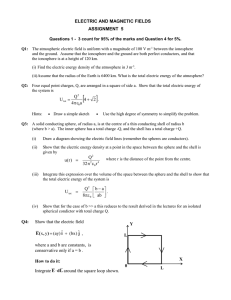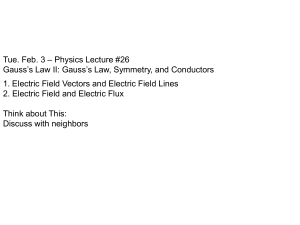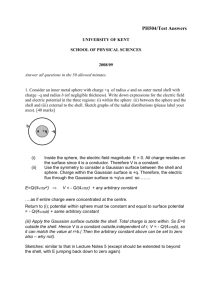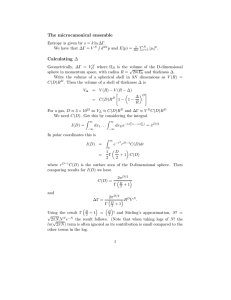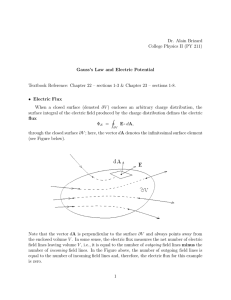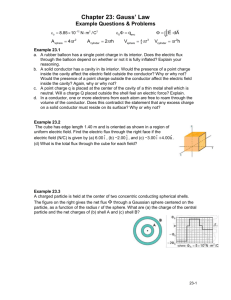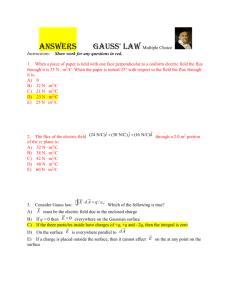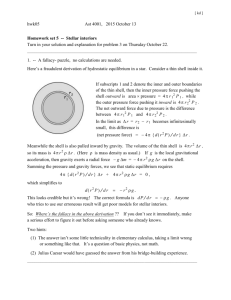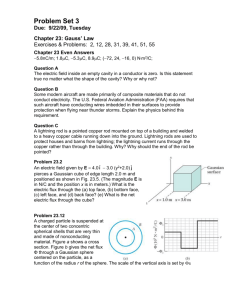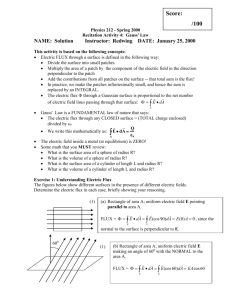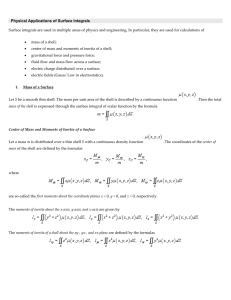MIT Electric Flux and Gauss`s Law – Practice II
advertisement
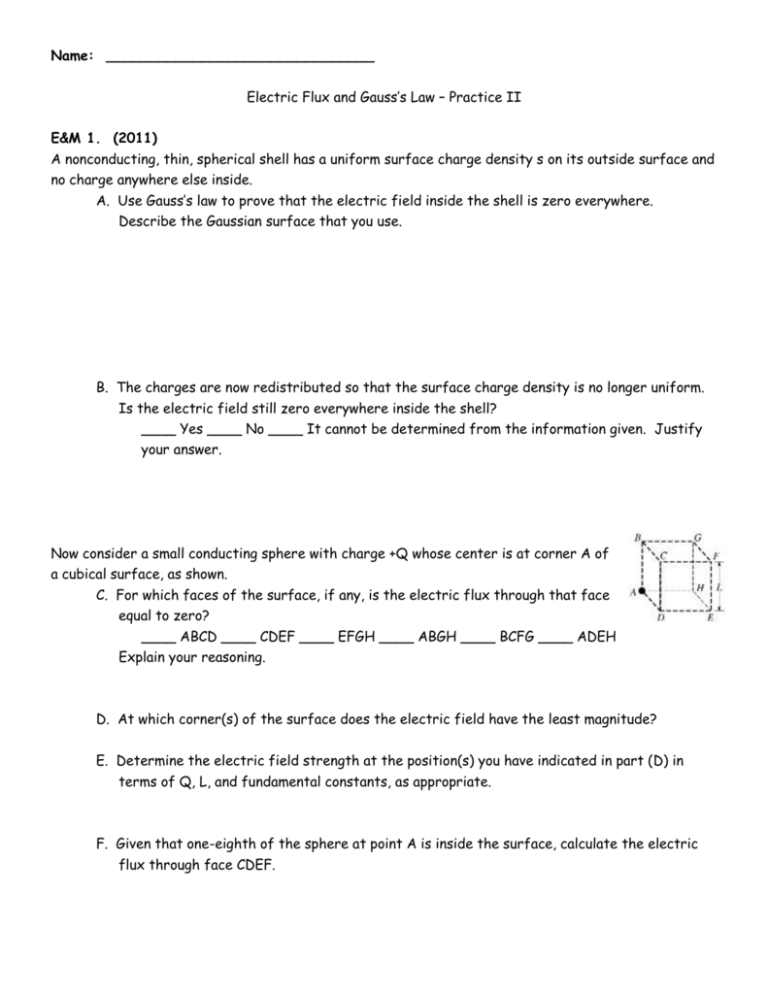
Name: _______________________________ Electric Flux and Gauss’s Law – Practice II E&M 1. (2011) A nonconducting, thin, spherical shell has a uniform surface charge density s on its outside surface and no charge anywhere else inside. A. Use Gauss’s law to prove that the electric field inside the shell is zero everywhere. Describe the Gaussian surface that you use. B. The charges are now redistributed so that the surface charge density is no longer uniform. Is the electric field still zero everywhere inside the shell? ____ Yes ____ No ____ It cannot be determined from the information given. Justify your answer. Now consider a small conducting sphere with charge +Q whose center is at corner A of a cubical surface, as shown. C. For which faces of the surface, if any, is the electric flux through that face equal to zero? ____ ABCD ____ CDEF ____ EFGH ____ ABGH ____ BCFG ____ ADEH Explain your reasoning. D. At which corner(s) of the surface does the electric field have the least magnitude? E. Determine the electric field strength at the position(s) you have indicated in part (D) in terms of Q, L, and fundamental constants, as appropriate. F. Given that one-eighth of the sphere at point A is inside the surface, calculate the electric flux through face CDEF. E&M. 1. (2008) A metal sphere of radius a contains a charge +Q and is surrounded by an uncharged, concentric, metallic shell of inner radius b and outer radius c, as shown above. Express all algebraic answers in terms of the given quantities and fundamental constants. A. Determine the induced charge on each of the following and explain your reasoning in each case. i. The inner surface of the metallic shell ii. The outer surface of the metallic shell B. Determine expressions for the magnitude of the electric field E as a function of r, the distance from the center of the inner sphere, in each of the following regions. i. r < a ii. a < r < b iii. b < r < c iv. c < r C. On the axes below, sketch a graph of E as a function of r. D. An electron of mass me carrying a charge -e is released from rest at a very large distance from the spheres. Derive an expression for the speed of the particle at a distance 10r from the center of the spheres. E&M 1. (2004)
